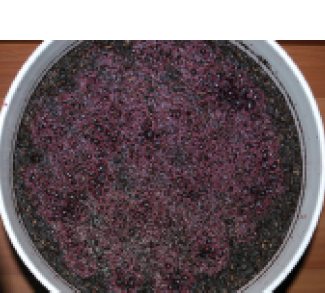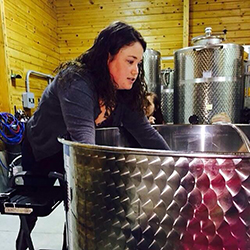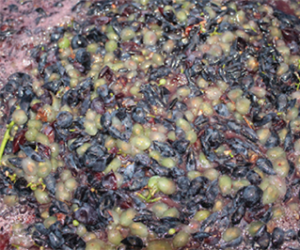Lots of home winemakers concentrate their efforts in tune with the natural seasons. They make all of their wine in the harvest months of August, September, and October using seasonally available just-picked wine grapes. (Full disclosure: That is my most frequent pattern, too. I live in Sonoma County, California, and have a hobby vineyard in my backyard.) But sometimes a home winemaker wants to do something else. Maybe you didn’t make enough wine in harvest season. Or maybe you just want an adult beverage that doesn’t line up with the local seasons. Whatever the motivation, there are several techniques for out-of-season wine.

Wine Ingredient Kits
Kits are very popular among readers of this magazine. Indeed, many of the annual winners in the WineMaker International Amateur Wine Competition are wines made from ingredient kits. Particularly useful if you do not have easy access to components like yeast, sulfites, and fining agents, ingredient kits come with everything you need. Kits use sterile grape juice, grape juice concentrate, or some combination of those. If you purchase a 100% juice kit, you will be making the volume of wine as received, often either 5 gallons (19 L) or 6 gallons (23 L). Kits with a concentrate will have you add clean, chlorine-free water to make up the intended final volume. Home winemaking shops everywhere carry these ingredient kits as retail stock and they can be bought online from general-purpose retail web sites and online homebrew/home winemaking vendors.
If you already make wine from fresh grapes, you probably have all the equipment you need to make a batch from an ingredient kit. You pour the juice or concentrate into a fermenter, add a measure of water if starting with concentrate, and add yeast. Some kits may have you add oak powder or chips or add bentonite to take the place of grape solids that are not present here. Among the advantages in using ingredient kits for your out-of-season wines are the many available varietals, all-inclusive supplies kit, rapid turnaround, and often-excellent quality. Many frequent kit users claim a fresher flavor in wines made mostly from juice, but concentrate kits also win awards. Prices for a 5- or 6-gallon (19- or 23-L) kit range from a low of about $40 (mostly concentrate) to as much as $180 (mostly juice, sometimes vineyard designated).
Bottled Grape Juice
When I owned a home winemaking shop, I once had a couple tell me about how they lived on a sailboat that they took up and down the California and Baja California coasts. One of their social activities was getting together in the evening with other boat dwellers for pot-luck parties. One of their sailor friends brought wine made from bottled juice and they wanted to learn how, too. Most bottled purple grape juice is Concord, so it will have the “foxy” grape-jelly taste of many native American grape wines. White juice is usually just labeled “white grape juice from concentrate,” so it could be any white variety, but is usually not quite as foxy as the purple. Look at the nutrition panel for sugar figures; generally 35 grams in 200 mL or thereabouts; around 16 °Brix. Alone, that would make a wine about 9% alcohol by volume. If that seems too low for you, just add sugar to your desired Brix level. Other ingredients are usually just citric acid and ascorbic acid (vitamin C) and should not interfere with your fermentation (avoid any juices with preservatives added). Get as much juice as you want, add sugar as desired, and proceed as with fresh juice for white wine. These juices cost about $0.10 per ounce, so 5 gallons (19 L) would be in the range of $64. The advantages are that the juice is available and it is easy to make a smaller quantity if you want to. Limitations include variety and the need to provide your own yeast, sulfite, and fining agents.
Canned Concentrates
Widely sold in home winemaking shops, the most popular canned concentrate is Alexander’s brand from California Concentrate Company. Many varieties are available in both red and white at about 68 °Brix in 46-oz. (1.4-L) cans. Alexander’s provides recipes for light, medium, and full-bodied wines using one, two, or three cans of concentrate for five gallons (19 L) of wine. The desired alcohol level is achieved by adding either cane sugar or the more easily fermented corn sugar (dextrose). Besides “sugar added” recipes, Alexander’s provides what they call “Old Country Style” red wine using four cans of concentrate and water, with no added sugar and an anticipated ABV of 12.5%. Concentrates retail for about $25 per can and corn sugar sells for about $2 per pound, so 5 gallons (19 L) costs from around $35 for “light” to $100 for “Old Country Style.” As with juice, you will add your own yeast, sulfite, nutrients, and fining agents at modest additional cost. Ordinary equipment used for fresh grape juice or for kit wines will serve well for your own concentrate wines, too. Advantages are ready availability, many varieties, and moderate cost.
Frozen Juice or Must
These products are kept in freezer warehouses until shipped to you. They do not need to be kept frozen during shipping, as the thawing in transit is part of your winemaking process. Available from suppliers like Brehm Vineyards and Wine Grapes Direct in 50-lb. (23-kg), 5-gallon (19-L) pails, red grapes are processed as whole destemmed must. Whites are frozen as destemmed, crushed, pressed, settled juice. A 5-gallon (19-L) pail of red must will yield about 3 gallons (11 L) of wine, so you will need to buy two to be comparable to a 5- to 6-gallon (19- to 23-L) batch. The white pail as shipped provides about 5 gallons (19 L) of finished wine. For reds, if you use two pails, you will need a food-grade primary fermenter of 12-gallons (45-L) capacity to allow for headspace for the rising cap and an open top for punch downs. Once your must is thawed, you will proceed exactly as for freshly destemmed and crushed grapes; add sulfites, yeast, and nutrients. Later, you will need a wine press or mesh bag to separate the finished red wine from the skins and pulp. For white, the thawed juice can be poured into a 6-gallon (23-L) carboy and fermented just like kit or juice wine. White juice pails retail for about $150 to $200, depending on variety. Red musts go for $135 to $350 (for a high-end vineyard designated Cabernet Sauvignon), per pail. Advantages for frozen juice or must include many varieties, vineyard and appellation designations, and quality like that of fresh grapes. Limitations include relatively higher prices and potential shipping costs.
Imported Grapes
Grapes from the Southern Hemisphere are picked during our springtime, packed into 18- or 20-lb. (8- or 9-kg) plastic crates, and loaded on pallets into containers for ocean shipping. From the US dock, they are trucked to importer’s warehouses. Although shipping may be available, many buyers of these grapes pick them up at the location of the importer. Right about the time you are reading this magazine would be a good time to inquire about a pre-order; somewhere in the February to March window.
All the equipment and supplies needed for local fresh-grape wine production will be needed for these products, also. You will need access to a crusher or crusher/destemmer and a wine press. It takes about 100 lbs. (45 kg) of grapes to make about 5 gallons (19 L) of finished wine. You will need five or six crates for that. If picked up, they ret
ail for about $25 to $35 per crate, for a batch cost of $125 to $210. I have used Chilean fresh grapes and I was very satisfied with the results. Advantages include making wine exactly the same way out of season as you do at the usual fall harvest. Many varieties are available and quality is generally very good. Limitations are higher cost than some methods covered here and the limited-time “second season.”
Other Fruits
Kits are available in a variety of fruit sources or you can use bottled fruit juice just as described earlier for grape juice. Canned fruit purées, like those from Oregon Fruit Products are available through many homebrew supply stores. Frozen fruits are available in large bags at club stores and online. And do not overlook fresh fruit out of the normal harvest season. Starting in the spring, you may be able to purchase local produce and berries. While many fruits come in around the time grapes do, melons, peaches, and pomegranates can be found in farmers’ markets into the fall. Berries, stone fruits, and more are often sold at local supermarkets from cold storage or imported for many months of the year. A few fruits, like pineapples and limes, are grown in tropical climates and distributed year-round.
For any of these, you will probably need to add some sugar and make an acid adjustment to make a pleasant wine. Dozens of recipes can be found online and in back issues of WineMaker. They may not produce quite the same quality wine you can make from grapes, but you can make a delicious adult beverage and have fun in the process!






